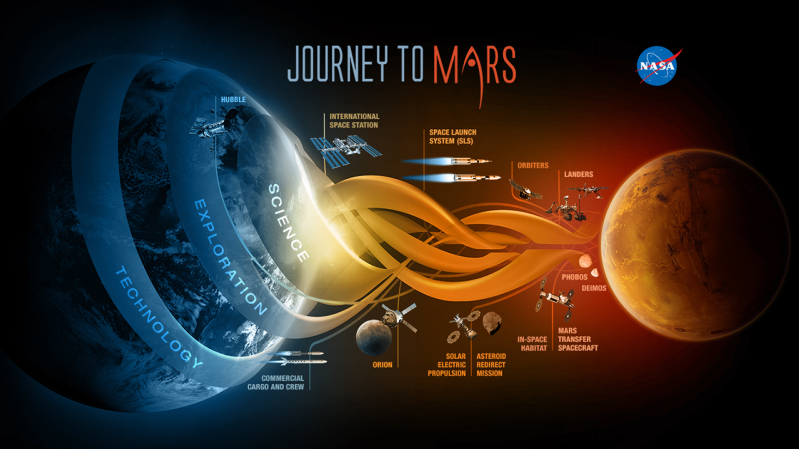
Current estimates show a manned spacecraft would take six months to reach the surface of Mars, but NASA is now working to cut that travel time. The brilliant minds at the space agency said it is possible to travel from Earth to Mars in just 3 days, for a 100 kg craft.
University of California's Dr. Philip Lubin said the system is called DEEP-IN, or Directed Propulsion for Interstellar Exploration. The proposed system would use electromagnetic acceleration instead of chemical acceleration, which is being used by today's spacecraft. Relying on giant fuel supply weighs down the spacecraft and long-distance travel is not possible. However, with electromagnetic acceleration, the energy supply is not a problem.
"Electromagnetic acceleration is only limited by the speed of light while chemical systems are limited to the energy of chemical processes," Lubin told in Yahoo Tech.
Watch NASA’s short video on the proposed system below:
The idea is that the propulsion system stays here on Earth, and the craft does not have any fuel or propellant.The scientists would install a system of reflectors on the craft that would propel it forward. The scientists also plan to eventually place a laser in Earth's orbit, which would utilize photon pressure to push the spacecraft as it travels away from Earth. A group of photons has tremendous amount of stored energy that can propel spaceships.
Last year, Lubin and his team of scientists received one of 15 Phase 1 NIAC grants, which gave them $100,000 to perform initial studies to the DEEP-IN project. The team uses the fund to plan a fully functional spacecraft, complete with controllable photon thrusters. The grant will also help the team to create ultra-low-mass probes, which could travel far beyond our solar system.
Aside from 3-day Mars travel, Lubin added that there are many potential applications for the DEEP-IN technology. For example, a powerful laser that could propel spacecraft forward at 25% of the speed of light is also capable of defending the Earth against dangerous asteroids. As a comparison, NASA's Voyager 1 spacecraft travels at 0.006 percent of the speed of light.
By 2030s, NASA plans to send humans on Mars -- goal outlined in the bipartisan NASA Authorization Act of 2010 and in the U.S. National Space Policy
NASA scientists believe the Red Planet is a rich destination for scientific discovery and robotic exploration to fully understand human's presence in the solar system. Mars evolution and formation is very similar to Earth, helping scientists to learn more about the origin of our planet.
Interestingly, Mars had conditions suitable for life in the past, and the planet may answer one of the fundamental mysteries of the universe: Does life exist beyond Earth?







